![]() The BirdLife International Seabird Tracking Database is the largest collection of seabird tracking data in existence, covering 189 species. It serves as a central store for seabird tracking data from around the world and aims to help further seabird conservation work and support the tracking community. Seabirds are one of the most threatened groups of birds, but because of their highly dispersed and mobile ecology, their distribution and behaviour at-sea are not well understood. Remote tracking data are vital to help understand how seabirds use the oceans and to identify important sites for their conservation.
The BirdLife International Seabird Tracking Database is the largest collection of seabird tracking data in existence, covering 189 species. It serves as a central store for seabird tracking data from around the world and aims to help further seabird conservation work and support the tracking community. Seabirds are one of the most threatened groups of birds, but because of their highly dispersed and mobile ecology, their distribution and behaviour at-sea are not well understood. Remote tracking data are vital to help understand how seabirds use the oceans and to identify important sites for their conservation.
The database contains tracking records for all 22 albatross species from 52 breeding colonies, with 9685 tracks and 3 750 478 data points submitted by 64 data holders (as at 2022). Data sets are also kept for ACAP-listed giant Macronectes spp., Procellaria Petrels and some shearwaters.
The database has recently received a series of updates to improve its function, aid data discovery/visualisation, and promote a long-term legacy for uploaded data. Read about the updates with an updated instructions page from here.
Originally called Tracking Ocean Wanderers, the database brings together data from a range of seabird species and families. It has been made possible through the collaboration of seabird scientists from around the world. The website has been developed to build links between data owners and their data, as well as to provide tools to support data submission and standardising as well as to foster further seabird conservation work.
Sign up for the online Seabird Tracking Database Newsletter here.
John Cooper, Emeritus Information Officer, Agreement on the Conservation of Albatrosses and Petrels, 04 December 2025
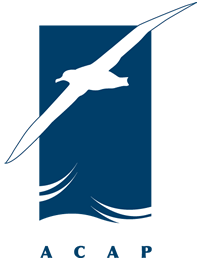
 English
English  Français
Français  Español
Español 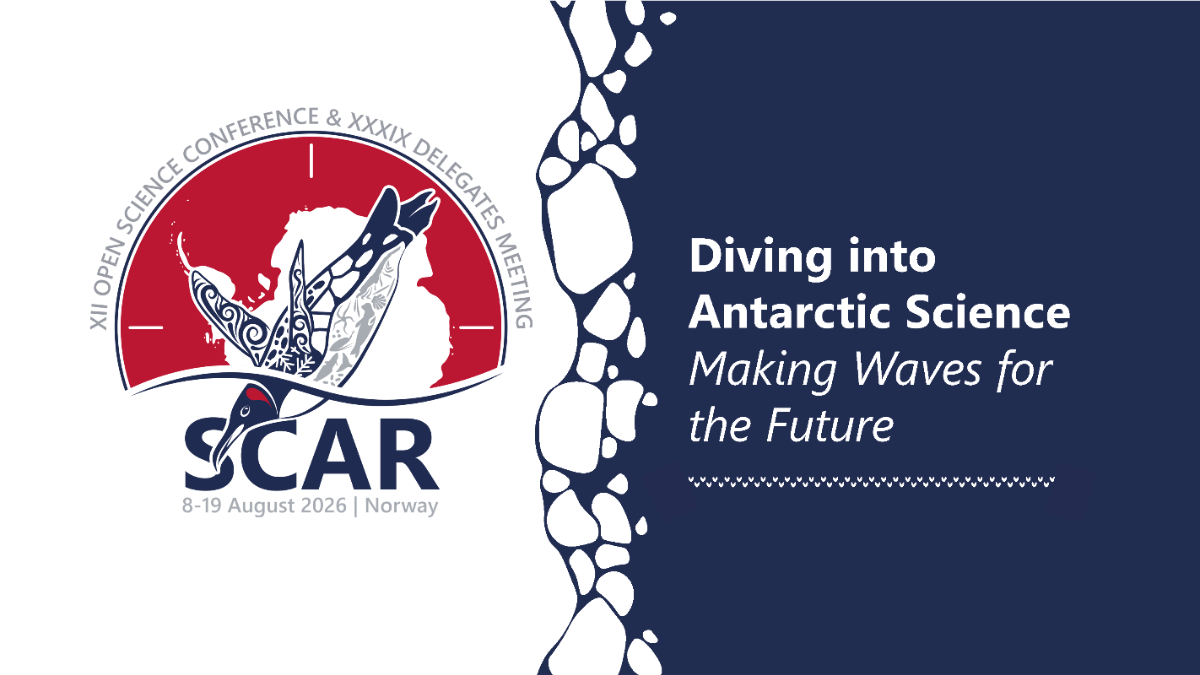
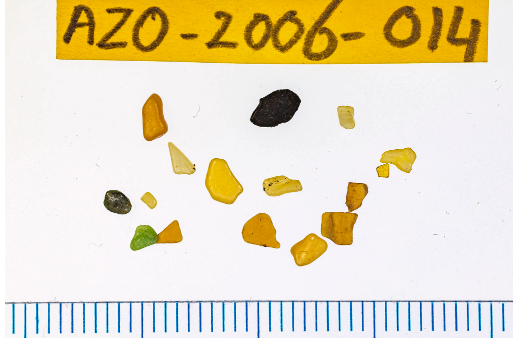
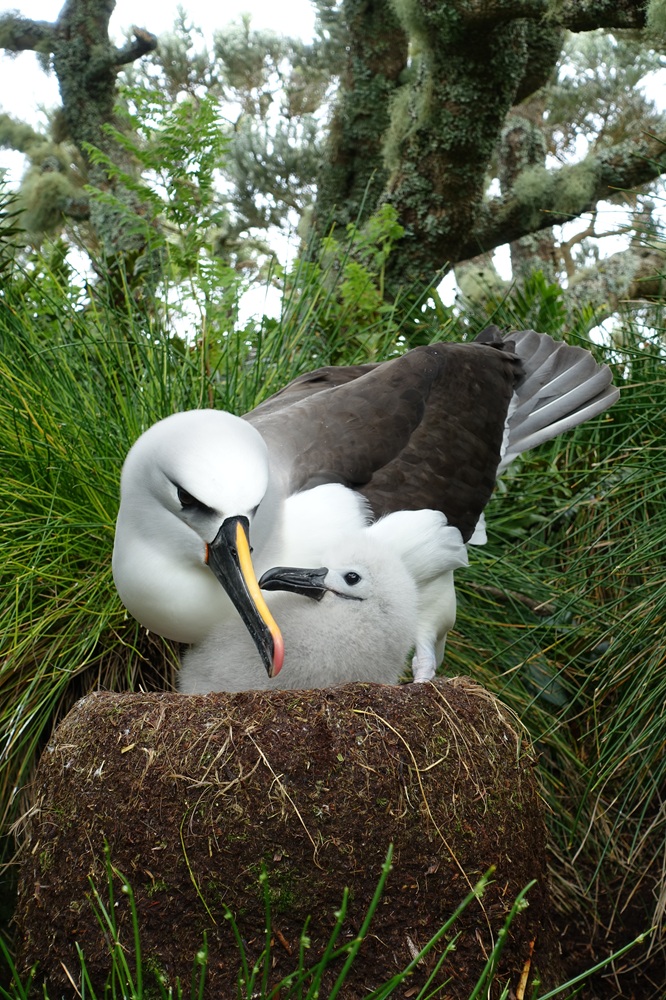 An Atlantic Yellow-nosed Albatross tends its chick on Gough Island, photograph by Michelle Risi
An Atlantic Yellow-nosed Albatross tends its chick on Gough Island, photograph by Michelle Risi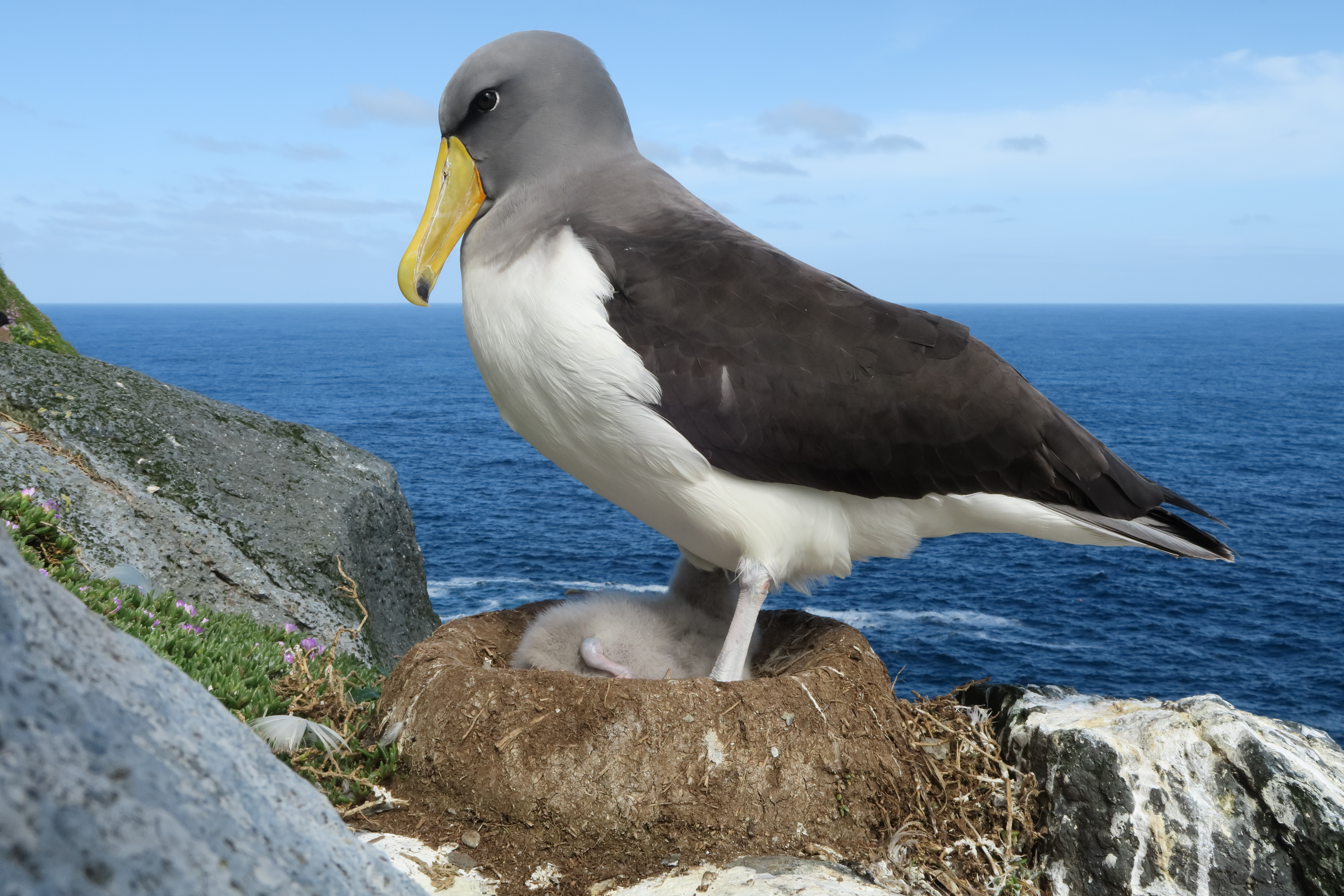 A Chatham Albatross stands over its chick on The Pyramid/Tarakoikoia, New Zealand, photograph by David Bowle
A Chatham Albatross stands over its chick on The Pyramid/Tarakoikoia, New Zealand, photograph by David Bowle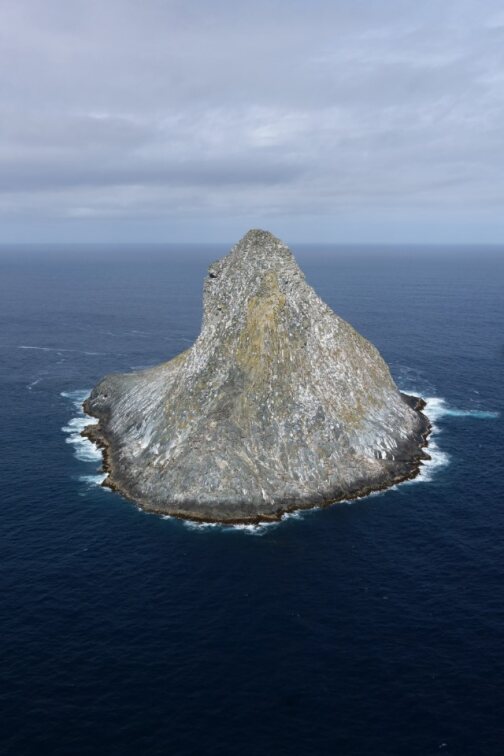 The Pyramid, Chatham Islands: sole breeding home of the Chatham Albatross, aerial photograph by David Boyle
The Pyramid, Chatham Islands: sole breeding home of the Chatham Albatross, aerial photograph by David Boyle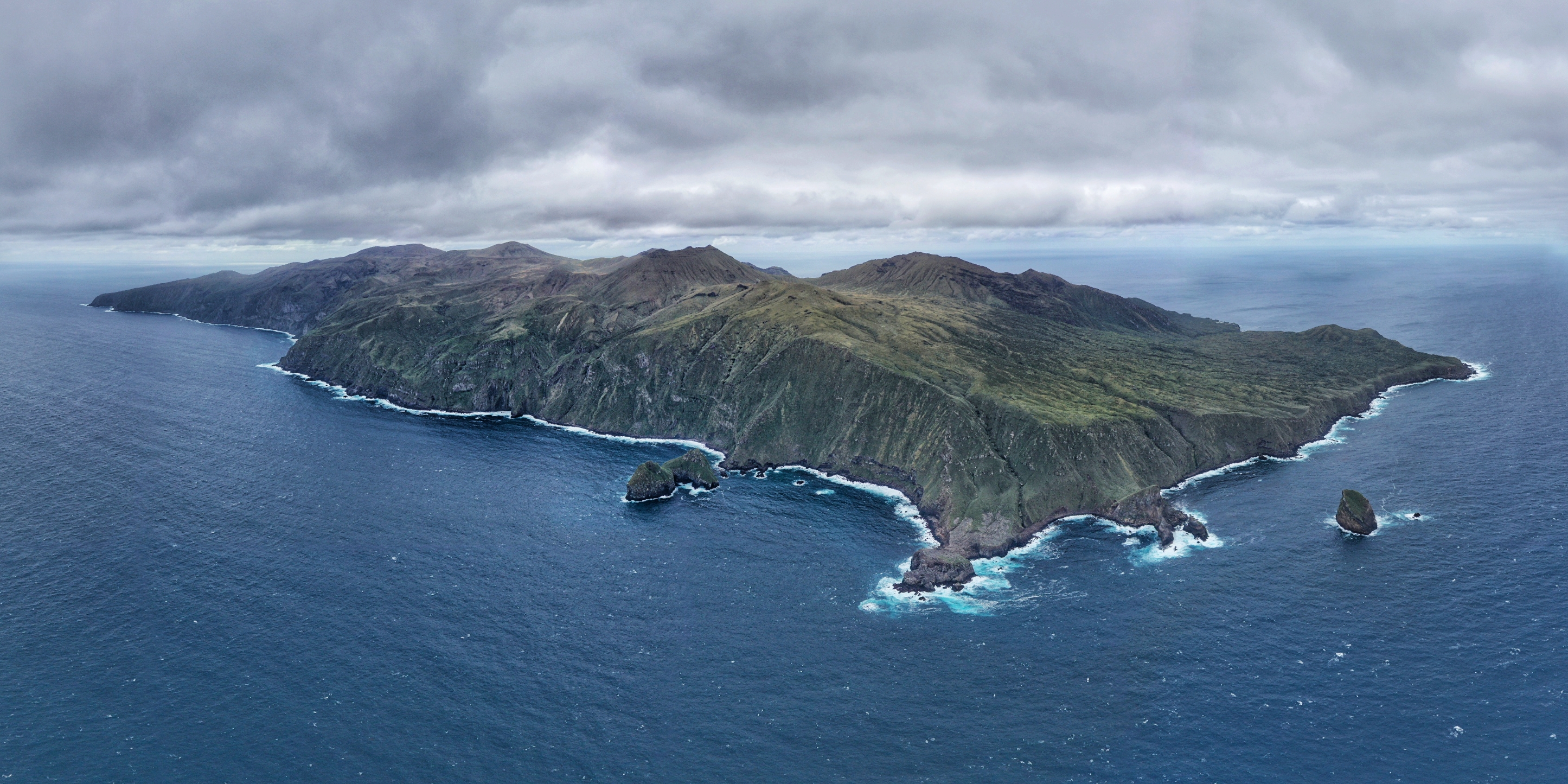
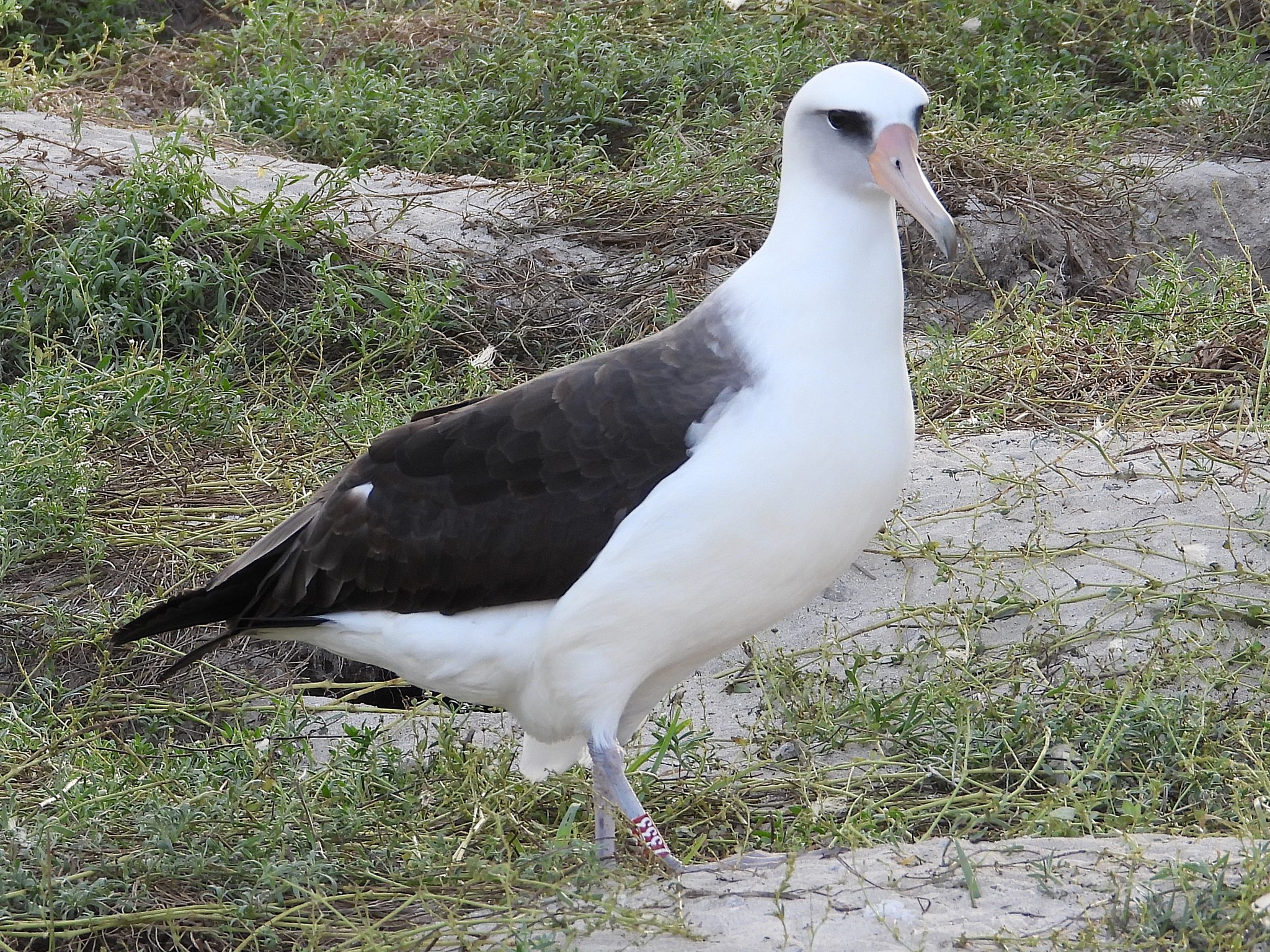 Wisdom shows her well-known red colour band Z333, photograph by Jon Plissner, USFWS
Wisdom shows her well-known red colour band Z333, photograph by Jon Plissner, USFWS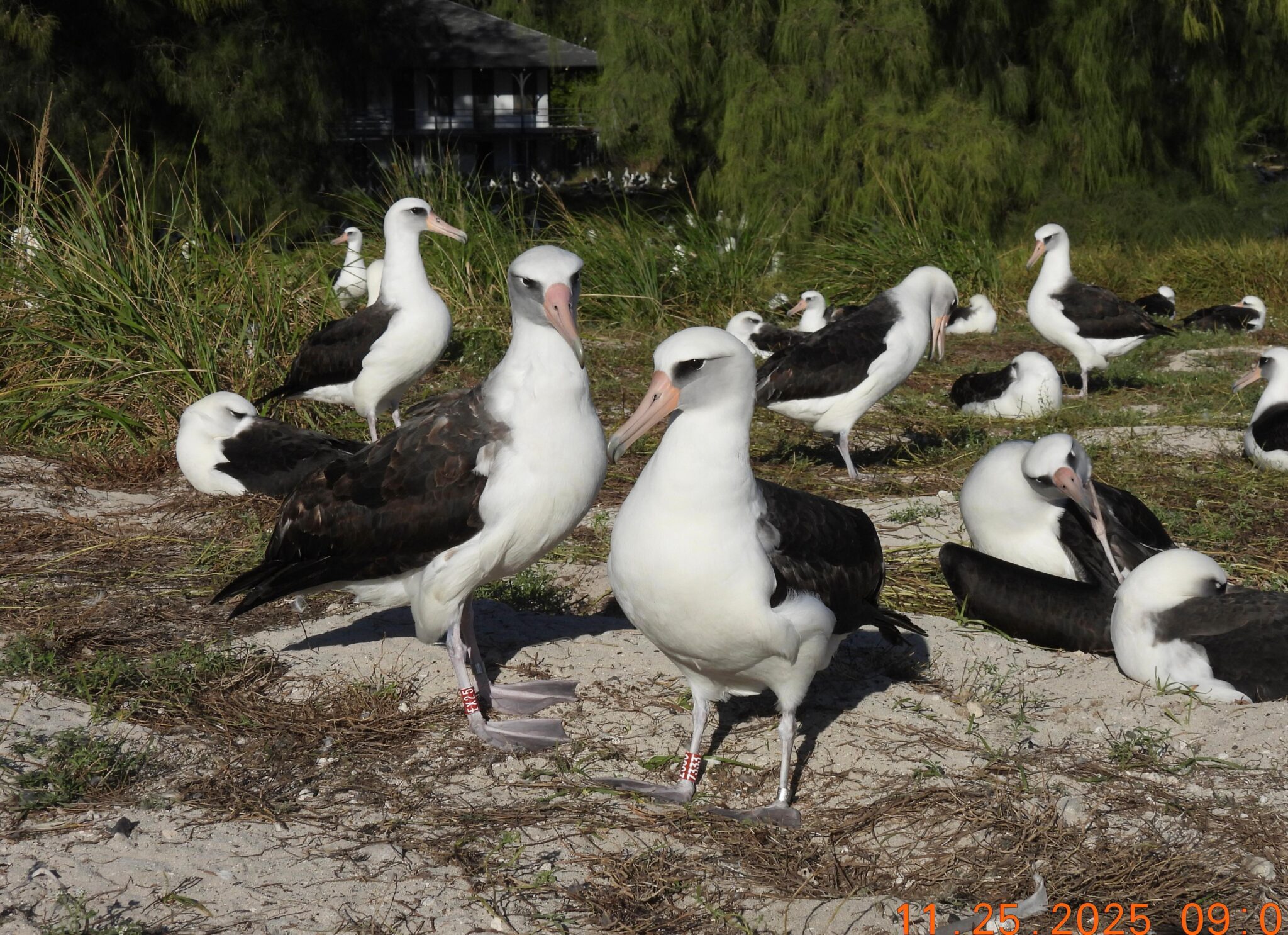 Wisdom and her mate, EX25, find each other, photograph by Chris Forster, 25 November 2025
Wisdom and her mate, EX25, find each other, photograph by Chris Forster, 25 November 2025